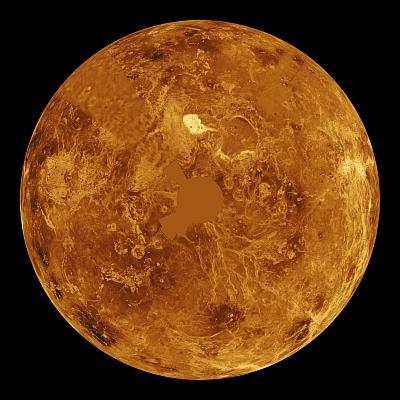Astronomers see possible hints of life in Venus's clouds
by Source:Scientists on Monday announced the discovery of a rare molecule -- phosphine -- in the clouds of Venus, a possible hint of microbial life in the atmosphere of our neighbouring planet.

OnEarth,phosphinegasisonlymadeindustrially,orbymicrobesthatthriveinoxygen-freeenvironments,accordingtotheresearchers,includingthosefromtheCardiffUniversityintheUnitedKingdom.
Researchers have speculated for decades that high clouds on Venus could offer a home for microbes -- floating free of the scorching surface, but still needing to tolerate very high acidity.
The detection of phosphine molecules, which consist of hydrogen and phosphorus, could point to this extra-terrestrial 'aerial' life, according to the research published in the journal in Nature Astronomy.
The team first used the James Clerk Maxwell Telescope in Hawaii to detect the phosphine.
They were then awarded time to follow up their discovery with 45 telescopes of the Atacama Large Millimeter/submillimeter Array in Chile.
Both facilities observed Venus at a wavelength of about 1 millimetre, much longer than the human eye can see -- only telescopes at high altitude can detect this wavelength effectively.
"This was an experiment made out of pure curiosity, really -- taking advantage of JCMT's powerful technology, and thinking about future instruments," said Professor Jane Greaves of Cardiff University.
"I thought we'd just be able to rule out extreme scenarios, like the clouds being stuffed full of organisms. When we got the first hints of phosphine in Venus' spectrum, it was a shock!" Greaves said.
Greaves said that both observatories had seen the same thing -- faint absorption at the right wavelength to be phosphine gas, where the molecules are backlit by the warmer clouds below.
Professor Hideo Sagawa of Kyoto Sangyo University used his models for the Venusian atmosphere to interpret the data, finding that phosphine is present but scarce -- only about twenty molecules in every billion.
The astronomers then ran calculations to see if the phosphine could come from natural processes on Venus.
They caution that some information is lacking -- in fact, the only other study of phosphorus on Venus came from one lander experiment, carried by the Soviet Vega 2 mission in 1985.
Massachusetts Institute of Technology scientist William Bains led the work on assessing natural ways to make phosphine.
Some ideas included sunlight, minerals blown upwards from the surface, volcanoes, or lightning, but none of these could make anywhere near enough of it.
Natural sources were found to make at most one ten thousandth of the amount of phosphine that the telescopes saw.
To create the observed quantity of phosphine on Venus, terrestrial organisms would only need to work at about 10 per cent of their maximum productivity, according to calculations by Paul Rimmer of Cambridge University.
Any microbes on Venus will likely be very different to their Earth cousins though, to survive in hyper-acidic conditions, the resaerchers said.